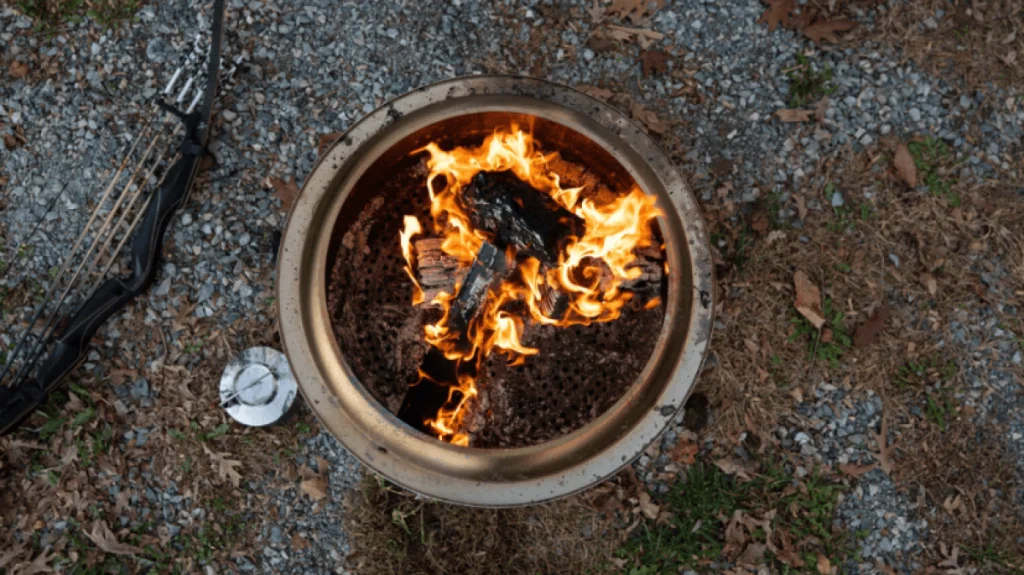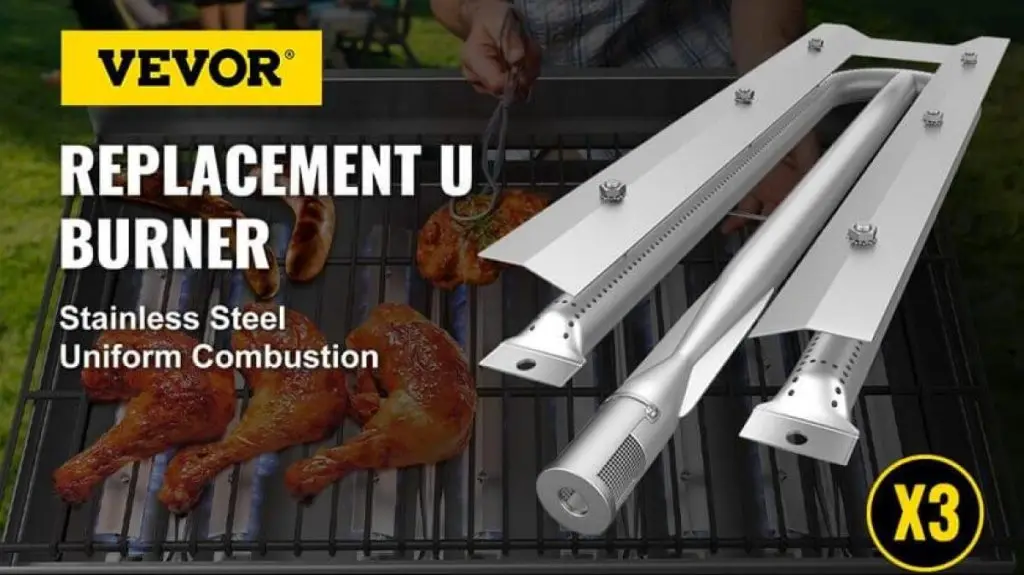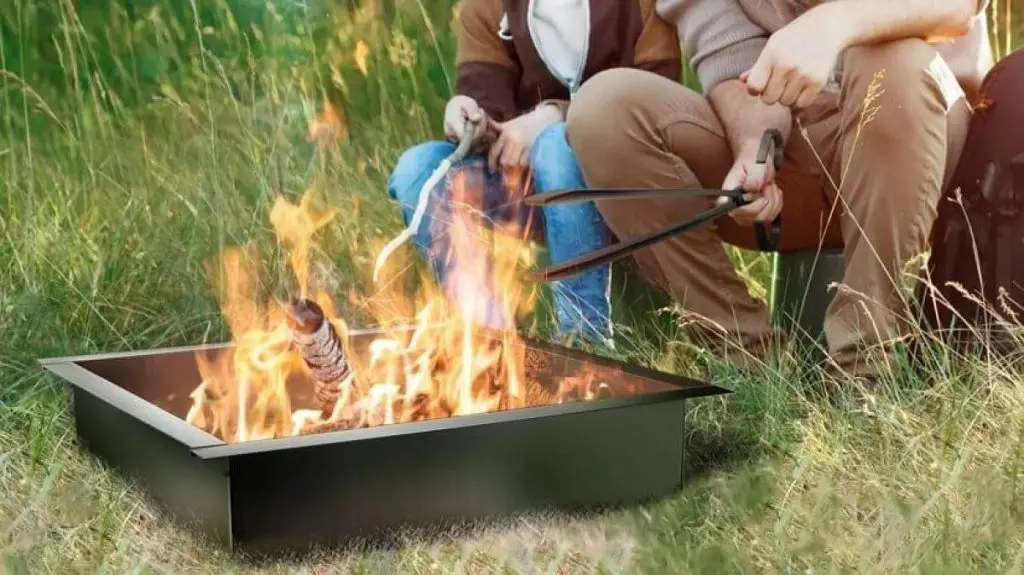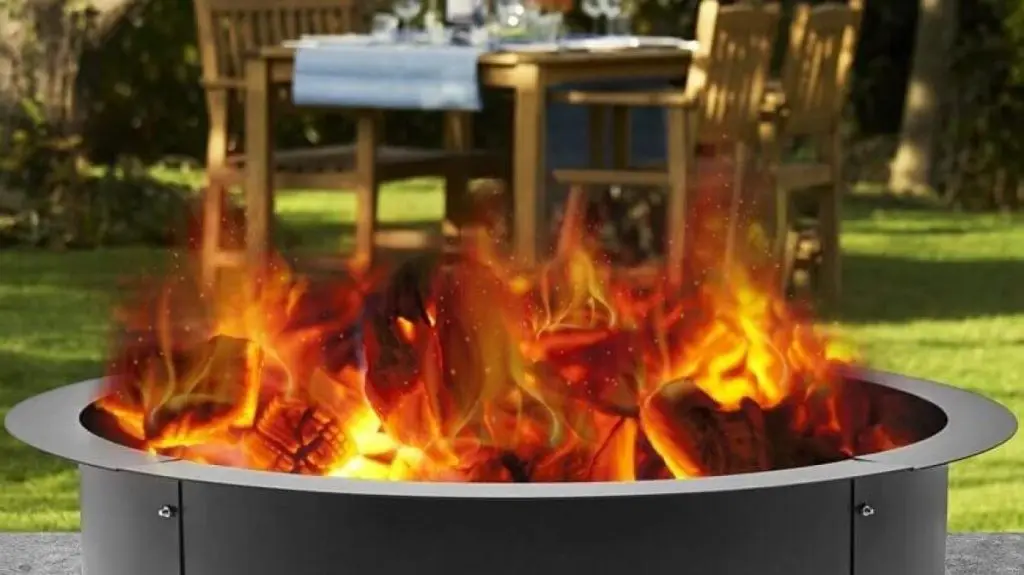The allure of a crackling fire pit, casting its warm glow on a cool evening, is irresistible. Beyond its aesthetic charm, a well-lit fire pit transforms an outdoor space into a haven of comfort and friendliness. But it all comes down to lighting a fire pit first; only then can you enjoy the chilly weather.
However, lighting a fire pit is a daunting task, especially for those who are doing it for the first time. It is particularly important to do it in the right manner if you are starting your journey. Nevertheless, this article is here to help you with how to light a gas fire pit.
We’ll explore the ways that you need to consider building the fire and give you a comprehensive idea about it. But before that, let’s get a better understanding of the basics of fit pit lighting.
The Basics: Understanding the Fire Pit Lighting
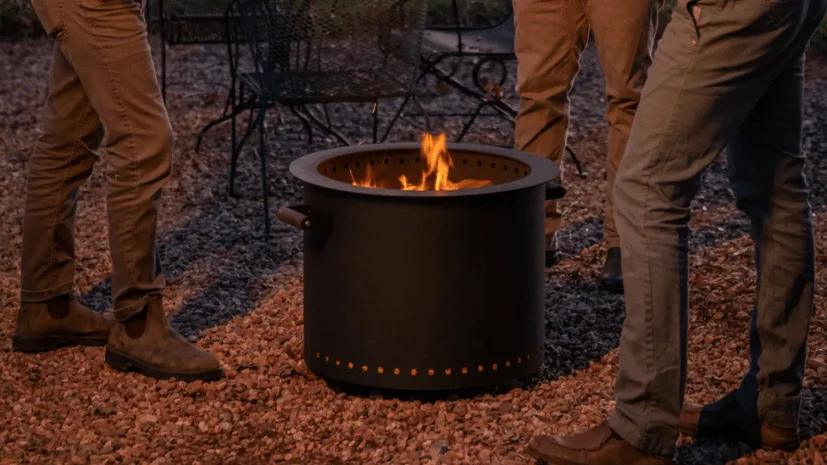
Before you learn how to light a propane fire pit, it is vital to understand its basics. Safety is highly important for outdoor fires and that is why you need to have a well-lit fire pit. It ensures that the flames stay within the designated area, reducing the risk of accidents.
Furthermore, lighting the fire pit correctly will allow you to maximize the use of your resources. This not only saves on fuel but also ensures a consistent and comforting warmth throughout the night. All in all, the longevity of your fire pit experience is linked with having basic knowledge about proper lighting.
Common Challenges with Fire Pit Lighting
As with any venture, lighting a fire pit has its share of challenges. Recognizing and overcoming these challenges is crucial to mastering the art. Wet wood, limited materials, and a lack of knowledge are common stumbling blocks.
However, these obstacles can be effortlessly navigated if you have the right insights. Lack of knowledge can be the most inhibiting factor. Many enthusiasts are unaware of the science behind fire lighting — the delicate balance of oxygen, fuel, and heat.
Learning more about them can enhance your understanding of the process. Not only that, but it also empowers you to troubleshoot and adapt when faced with unexpected challenges during fire pit lighting.
Wet wood poses a significant challenge, often thwarting initial attempts to ignite a fire. The key lies in understanding how to dry and prepare wet wood. You can prepare wet wood through various ways, such as:
- Alternative ignition methods
- Selecting the appropriate type of wood that is less susceptible to moisture
- Through proper storage
Therefore, this is an important factor that you need to consider when lighting a fire pit. Let’s move on to the next step which is about setting the stage when preparing your fire pit.
Preparing Your Fire Pit: Setting the Stage
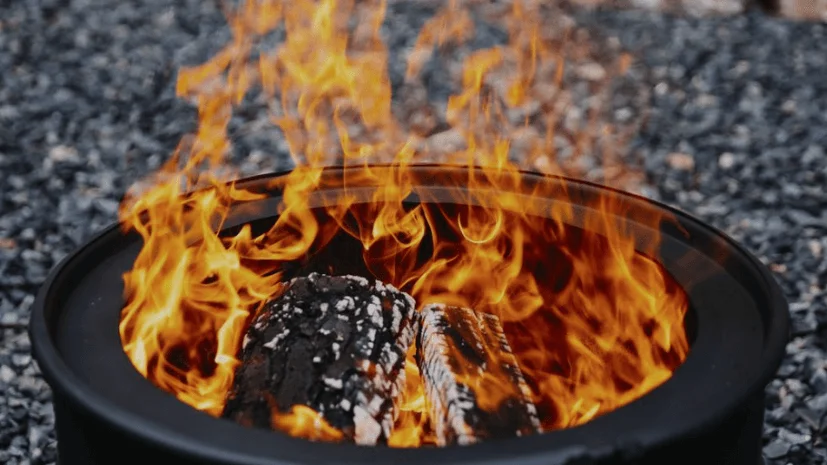
Another important thing you need to discuss before you start a start fire pit fire is where you want to set the stage. The success of your fire pit venture begins with the best location. Ideally, you should have a fire pit in a well-thought-out space.
It should be away from potential hazards like trees or tall grasses. This way, you can ensure complete safety while maximizing the enjoyment of your venture. Embrace the charm of established fire pits while avoiding pitfalls that could dampen the experience.
Before you even strike the first match, proper preparation sets the stage for a flawless fire pit experience. It is best to start by clearing old ashes and ensuring a sand or gravel base. This is highly important to ensure doesn’t damage the surface, especially if you have wooden decking.
In addition to that, you should implement effective containment measures are crucial steps. For instance, you can add a spark screen to contain the ashes and fire sparks. These are some critical things to note before learning how to light an outdoor fire pit.
Gathering Essential Materials: The Building Blocks
The cornerstone of a successful fire pit experience lies in the careful selection of essential materials. Here are some things you need to prepare before you get started with how to light a fire pit.
Tools and Firewood
First things first, the firewood logs you chose should be dry, seasoned, and well-stacked. Additionally, you also need to have the right tools to split firewood to the appropriate size, such as a hatchet or kindling splitter. It can also be great for the process of creating kindling — a critical aspect of lighting a fire later.
An important thing here to note is firewood. The local firewood is not just a matter of convenience; it’s a strategy for success. This is because it is well-adapted to the climate, meaning it’s more likely to burn efficiently and consistently. Furthermore, the choice of hardwoods cannot be overstated.
Hardwoods such as oak or hickory, burn hotter and longer than softer woods. It will help enhance the overall warmth of your fire pit. So, before you learn how to stack wood in a fire pit, this is something that you need to keep in mind.
Tinder and Kindling
As mentioned earlier, kindling is a crucial aspect of burning fire. These are smaller twigs and branches that will be dry to ensure that your firewood continues to burn for a long time. However, you need to have a tinder – the foundation and the base of your fire. The tinder can be anything, such as:
- Tree Bark
- Pinecones
- Newspapers
- Leaves
You can also go for commercial fire starters with better efficiency and can serve as effective tinder. Incorporating both into your fire pit routine ensures a seamless transition from spark to flame. It is the most crucial step of the entire process of how to light a fire pit.
Ignition Sources
The variety of ignition sources available provides flexibility and adaptability to diverse situations. Whether you’re a traditionalist with matches or a modernist relying on weatherproof alternatives, having the right ignition source at your disposal is essential.
Lighters are a popular choice because of their simplicity and convenience. They are easy to use and readily available, making them a staple for many fire pit enthusiasts. On the other hand, matches, with their nostalgic charm, offer a more traditional approach. Waterproof or stormproof matches are handy in challenging weather conditions.
Building the Fire: Techniques and Structures
Choosing the right fire techniques and structures is vital if you want to ensure that it continues to burn as long as you want it. So, you can choose any fire techniques and structures regarding how to arrange firewood in a fire pit.
The Cone Method
This method is a fast-burning style that is ideal for quick warmth or cooking. It involves stacking firewood in a conical shape, which helps in efficient airflow and rapid combustion. The concentrated structure ensures a focused and intense flame. As a result, it is perfect for situations where immediate heat is required.
The Log Cabin Method
For those languid evenings that demand a slow-burning, enduring flame, the Log Cabin Method stands as an artful approach. In this technique, you would have to place two logs that are parallel to each other, and then stack them with two more.
The kindling and the tinder will both be in the center, and you can continue to stack the logs according to your preference. Next, you can ignite the tinder and add more kindling so the logs can catch fire.
The Lean-To Method
If you want to know the best way to start a fire in a fire pit for cooking or windy conditions, then the lean-to method is the go-to option. The tinder is in the center, while the kindling is in a vertical position.
Take two fuelwood pieces and align them on both sides. Do the same thing again with two fuel wood logs, only this time, you need to put them in a perpendicular position.
Lighting the Fire: Ignition and Maintenance
When we talk about how to start a fire in a metal fire pit, it is also about ensuring that it continues to burn. Therefore, you need to focus on the maintenance of the fire as well. On that note, here are a few things to note for lighting and maintaining the fire.
- Starting with Tinder – The first thing to ensure is that the tinder is at the center of the pit. It should also push the fire upwards.
- Oxygen’s Role in Fire Lighting – Utilize bursts of oxygen, blowing techniques, and tools to assist in the ignition process.
- Maintaining the Flame – Kindling and firewood are vital for a sustained flame. You need to ensure a solid foundation before introducing larger wood pieces.
FAQs about Lighting a Fire Pit
How to Light Wet Wood?
If you want to start a fire with wood, then you need to have a platform instead of a fire pit. Also, you must have at least four times more dry tinder and a starter like magnesium shavings.
Starting a Fire without a Lighter or Matches?
There are various ways that you can start a fire without a lighter or matches, such as:
- Traditional lenses
- The hand drill
- Fire plough
- Fire piston
- Char cloth and flint
- Bow drill
- Batteries and steel wool
How to Light a Gas Fire Pit?
Most gas fire pits come with a spark ignition system through which you can press a button to start the heating process. Once you open the gas valve, the pilot light will create sparks to heat the propane. After that, the fire pit will produce flames. Make sure to follow the manufacturer’s instructions on how to turn on the propane fireplace.
Summing up
We hope you have a clear idea about how to light a gas fire pit. Now that you know everything, it is time to start implementing fire pit lighting ideas and make the most of them. Start shopping for the best fire pits that can increase the aesthetic appeal of your home.

